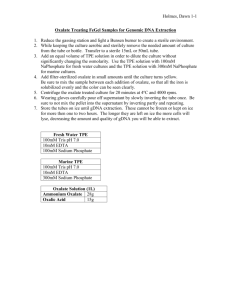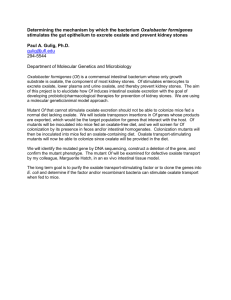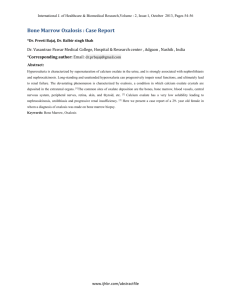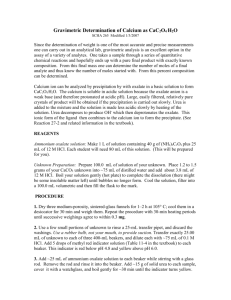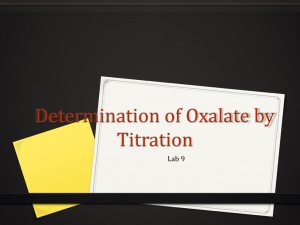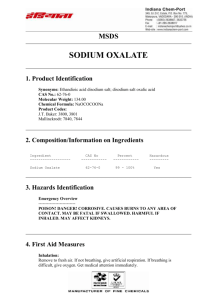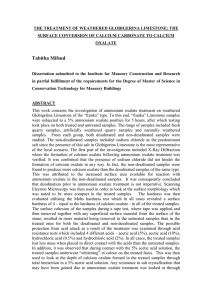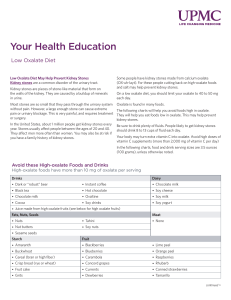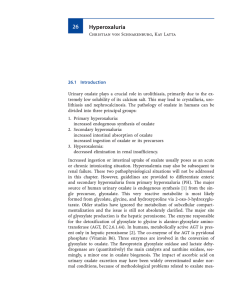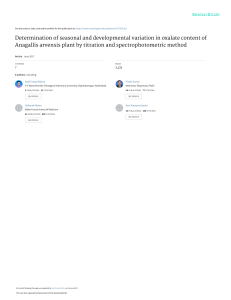Child Heath Research Vacation Studentship - Summer 2015
advertisement
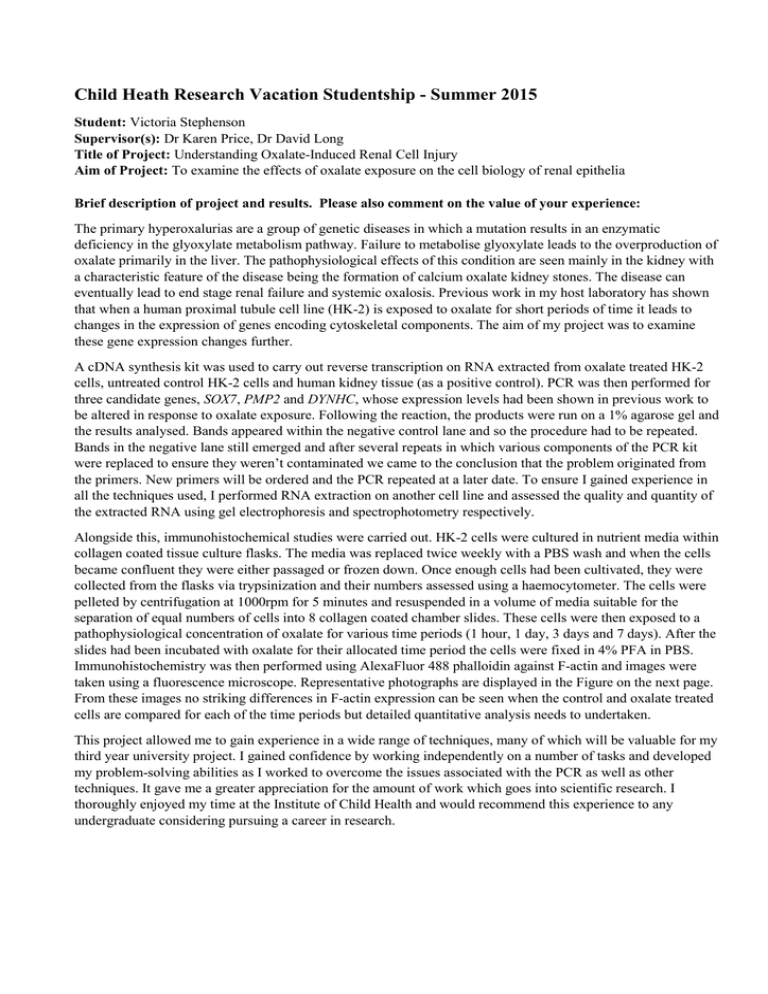
Child Heath Research Vacation Studentship - Summer 2015 Student: Victoria Stephenson Supervisor(s): Dr Karen Price, Dr David Long Title of Project: Understanding Oxalate-Induced Renal Cell Injury Aim of Project: To examine the effects of oxalate exposure on the cell biology of renal epithelia Brief description of project and results. Please also comment on the value of your experience: The primary hyperoxalurias are a group of genetic diseases in which a mutation results in an enzymatic deficiency in the glyoxylate metabolism pathway. Failure to metabolise glyoxylate leads to the overproduction of oxalate primarily in the liver. The pathophysiological effects of this condition are seen mainly in the kidney with a characteristic feature of the disease being the formation of calcium oxalate kidney stones. The disease can eventually lead to end stage renal failure and systemic oxalosis. Previous work in my host laboratory has shown that when a human proximal tubule cell line (HK-2) is exposed to oxalate for short periods of time it leads to changes in the expression of genes encoding cytoskeletal components. The aim of my project was to examine these gene expression changes further. A cDNA synthesis kit was used to carry out reverse transcription on RNA extracted from oxalate treated HK-2 cells, untreated control HK-2 cells and human kidney tissue (as a positive control). PCR was then performed for three candidate genes, SOX7, PMP2 and DYNHC, whose expression levels had been shown in previous work to be altered in response to oxalate exposure. Following the reaction, the products were run on a 1% agarose gel and the results analysed. Bands appeared within the negative control lane and so the procedure had to be repeated. Bands in the negative lane still emerged and after several repeats in which various components of the PCR kit were replaced to ensure they weren’t contaminated we came to the conclusion that the problem originated from the primers. New primers will be ordered and the PCR repeated at a later date. To ensure I gained experience in all the techniques used, I performed RNA extraction on another cell line and assessed the quality and quantity of the extracted RNA using gel electrophoresis and spectrophotometry respectively. Alongside this, immunohistochemical studies were carried out. HK-2 cells were cultured in nutrient media within collagen coated tissue culture flasks. The media was replaced twice weekly with a PBS wash and when the cells became confluent they were either passaged or frozen down. Once enough cells had been cultivated, they were collected from the flasks via trypsinization and their numbers assessed using a haemocytometer. The cells were pelleted by centrifugation at 1000rpm for 5 minutes and resuspended in a volume of media suitable for the separation of equal numbers of cells into 8 collagen coated chamber slides. These cells were then exposed to a pathophysiological concentration of oxalate for various time periods (1 hour, 1 day, 3 days and 7 days). After the slides had been incubated with oxalate for their allocated time period the cells were fixed in 4% PFA in PBS. Immunohistochemistry was then performed using AlexaFluor 488 phalloidin against F-actin and images were taken using a fluorescence microscope. Representative photographs are displayed in the Figure on the next page. From these images no striking differences in F-actin expression can be seen when the control and oxalate treated cells are compared for each of the time periods but detailed quantitative analysis needs to undertaken. This project allowed me to gain experience in a wide range of techniques, many of which will be valuable for my third year university project. I gained confidence by working independently on a number of tasks and developed my problem-solving abilities as I worked to overcome the issues associated with the PCR as well as other techniques. It gave me a greater appreciation for the amount of work which goes into scientific research. I thoroughly enjoyed my time at the Institute of Child Health and would recommend this experience to any undergraduate considering pursuing a career in research. Figure 1 Representative fluorescence microscopy images of phalloidin staining of HK-2 cells exposed to oxalate for 1hour, 1 day, 3 days and 7 days.
